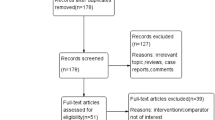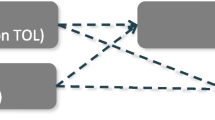Abstract
The field of therapeutics in autosomal dominant polycystic kidney disease (ADPKD) has seen a significant expansion recently, as major clinical trials have provided promising evidence in favor of new disease-modifying drugs. Though these trials are encouraging, limitations are noticeable in the form of methodological issues that restrict the interpretation of results. In this review, we discuss the methodological pitfalls of high-profile clinical interventional trials for ADPKD which have been published since 2009. Issues in study design, patient selection and follow-up, analyses and reporting of results are presented. From this review, we highlight a number of suggestions for future improvement including designs to enrich a more homogeneous patient population (i.e. based on their age-adjusted total kidney volume and/or underlying mutation class) at high-risk for disease progression, appropriate study duration and patient sample size that are matched to the disease severity of the study patients, and the use of baseline characteristics (i.e. renal function, TKV, and the proportion of PKD1 and PKD2 patients) of the analyzed patients as a quality control measure to assess any potential imbalance in randomization. Furthermore, the recognition that TKV change is not a linear trait is important in both the study design and interpretation. Implementing these lessons learned from the published trials will greatly enhance the robustness and validity of future clinical trials in ADPKD.
Similar content being viewed by others
References
Harris PC, Torres VE (2009) Polycystic kidney disease. Annu Rev Med 60:321–337
Willey CJ et al (2016) Prevalence of autosomal dominant polycystic kidney disease in the European Union. Nephrol Dial Transplant. doi:10.1093/ndt/gfw240
Hwang YH et al (2016) Refining genotype-phenotype correlation in autosomal dominant polycystic kidney disease. J Am Soc Nephrol 27(6):1861–1868
Cornec-Le Gall E et al (2013) Type of PKD1 mutation influences renal outcome in ADPKD. J Am Soc Nephrol 24(6):1006–1013
Heyer CM et al (2016) Predicted mutation strength of nontruncating PKD1 mutations aids genotype-phenotype correlations in autosomal dominant polycystic kidney disease. J Am Soc Nephrol 27:2872–2884
Perico N et al (2010) Sirolimus therapy to halt the progression of ADPKD. J Am Soc Nephrol 21(6):1031–1040
Hulley SB et al (2000) Clinical Trials II. In: Designing clinical research. Wolters Kluwer, Philadelphia, pp 157–174
Rangan GK et al (2009) Therapeutic role of sirolimus in non-transplant kidney disease. Pharmacol Ther 123(2):187–206
Gupta SK (2011) Intention-to-treat concept: a review. Perspect Clin Res 2(3):109–112
Caroli A et al (2013) Effect of longacting somatostatin analogue on kidney and cyst growth in autosomal dominant polycystic kidney disease (ALADIN): a randomised, placebo-controlled, multicentre trial. Lancet 382(9903):1485–1495
Torres VE et al (2012) Tolvaptan in patients with autosomal dominant polycystic kidney disease. N Engl J Med 367(25):2407–2418
Walz G et al (2010) Everolimus in patients with autosomal dominant polycystic kidney disease. N Engl J Med 363(9):830–840
Moher D, Schulz KF, Altman DG (2001) The CONSORT statement: revised recommendations for improving the quality of reports of parallel-group randomized trials. Ann Intern Med 134(8):657–662
Schrier RW et al (2014) Blood pressure in early autosomal dominant polycystic kidney disease. N Engl J Med 371(24):2255–2266
Torres VE et al (2014) Angiotensin blockade in late autosomal dominant polycystic kidney disease. N Engl J Med 371(24):2267–2276
Hogan MC et al (2010) Randomized clinical trial of long-acting somatostatin for autosomal dominant polycystic kidney and liver disease. J Am Soc Nephrol 21(6):1052–1061
van Keimpema L et al (2009) Lanreotide reduces the volume of polycystic liver: a randomized, double-blind, placebo-controlled trial. Gastroenterology 137(5):1661–1668
Cadnapaphornchai MA et al (2014) Effect of pravastatin on total kidney volume, left ventricular mass index, and microalbuminuria in pediatric autosomal dominant polycystic kidney disease. Clin J Am Soc Nephrol 9(5):889–896
Irazabal MV et al (2015) Imaging classification of autosomal dominant polycystic kidney disease: a simple model for selecting patients for clinical trials. J Am Soc Nephrol 26(1):160–172
Grantham JJ et al (2006) Volume progression in polycystic kidney disease. N Engl J Med 354(20):2122–2130
King BF et al (2003) Magnetic resonance measurements of renal blood flow as a marker of disease severity in autosomal-dominant polycystic kidney disease. Kidney Int 64(6):2214–2221
Antiga L et al (2006) Computed tomography evaluation of autosomal dominant polycystic kidney disease progression: a progress report. Clin J Am Soc Nephrol 1(4):754–760
Kline TL et al (2016) Utilization magnetization trnasfer imaging to investigate tissue remodelling in a murine model of autosomal dominant polycystic kidney disease. Magnetic resonance. Medicine 75:1466–1473
Serra AL et al (2010) Sirolimus and kidney growth in autosomal dominant polycystic kidney disease. N Engl J Med 363(9):820–829
Bae KT et al (2009) MRI-based kidney volume measurements in ADPKD: reliability and effect of gadolinium enhancement. Clin J Am Soc Nephrol 4(4):719–725
Chapman A et al (2012) Kidney volume and functional outcomes in autosomal dominant polycystic kidney disease. Clin J Am Soc Nephrol 7:479–486
Author information
Authors and Affiliations
Corresponding author
Ethics declarations
Conflict of interest
The authors declare they have no conflict of interest.
Ethical approval
This article does not contain any studies with human participants performed by any of the authors.
Additional information
Ioan-Andrei Iliuta and Abhijat Kitchlu have contributed equally as joint first-authors.
Rights and permissions
About this article
Cite this article
Iliuta, IA., Kitchlu, A. & Pei, Y. Methodological issues in clinical trials of polycystic kidney disease: a focused review. J Nephrol 30, 363–371 (2017). https://doi.org/10.1007/s40620-016-0358-6
Received:
Accepted:
Published:
Issue Date:
DOI: https://doi.org/10.1007/s40620-016-0358-6




